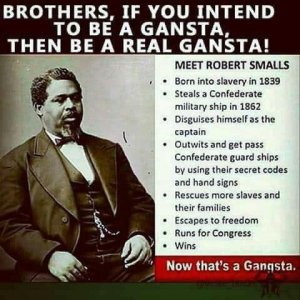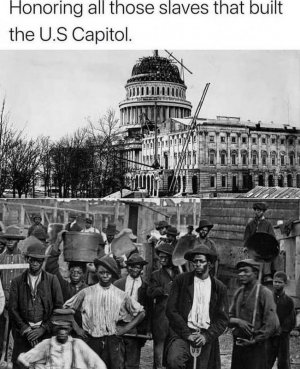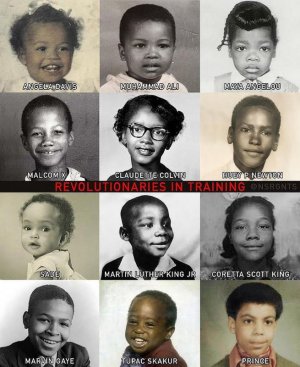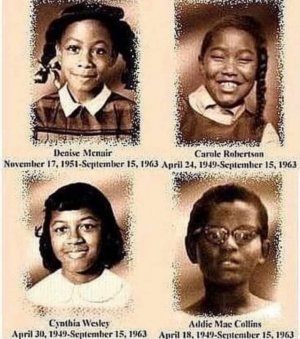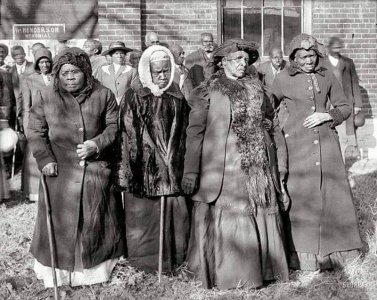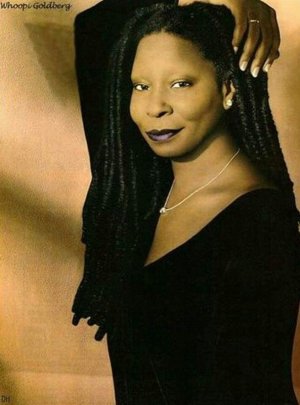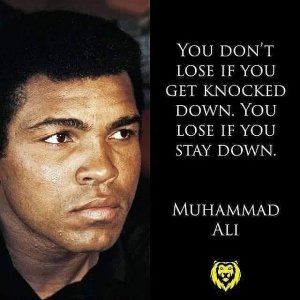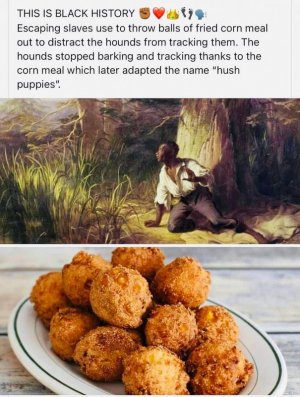The Underground Railroad also ran through New Jersey. My husband and Mr. Richardson, the historian, were friends and I'm pretty sure I know descendants of William Van Rensalier. This is from The Bergen Record:
For fugitives from slavery, a welcoming light in Paterson
Jim BeckermanNorthJersey.com
"One if by land, two if by sea." You know that story. Paul Revere. The midnight ride. The lights in the church.
Here's a story you might not know. Paterson. The fugitive slaves. And the lighted cupola.
"That was the welcome sign," said historian Jimmy Richardson, author of "Slavery at the River's Edge," who will be co-hosting a
ZOOM program, "They Secretly Helped Many A Fugitive," on Feb. 12 at 2 p.m., and presented by the American Labor Museum/Botto House National Landmark in Haledon.
In American history, it can be hard to tell where fact ends and myth begins.
But this story of the Underground Railroad and the Paterson safe house managed by two remarkable gentlemen — one Black, one white — has a solid basis in truth. Even if that lighted cupola, like Paul Revere's lanterns, might smack a bit of romance.
"The city's history as a haven for fugitive slaves has been overlooked," said Evelyn Hershey, education director of the Botto House/Labor Museum. "It's obviously a very important part of the story of our state, and our nation."
You've heard of the Underground Railroad — but did you know it made station stops in Paterson?
In those days, everything did. Roads, canals, railways all met in America's first industrial city. It was a hub. So it might be expected that New Jersey's four major underground railroad routes, wending their way north out of Philadelphia, Camden and Trenton, would also converge on the city by the falls.
More:
The interesting history of the real name of Martin Luther King Jr. — and why it was changed
Also:
To B, or not to b? Why capitalize the 'B' in Black? | Matters of Fact
Related:
New documentary to show centuries before the Greeks, African astronomers named the stars
"Paterson was a special place," said Richardson, a Paterson native who now lives in Hillside. "It's an industrial city with three major railroads, and five rivers as an escape route."
Fugitives, so the story goes, would arrive on Garret Mountain, overlooking the city, and look for the lighted cupola.
"That would be the sign to the slaves," Richardson said. As anyone who's been on the mountain today could tell you, the entirety of Paterson is spread out below, visible from the overlook.
From there, Underground Railroad "conductors" would take them down to the city. "They would bring them down Old Stoney Road, the oldest road in Paterson," Richardson said. "Cobblestone. They would have brought them down Mill Street into the city, or crossed over the Great Falls Bridge, built in 1827. All wooded area, very camouflaged."
From the mountain, it was about a 3-mile walk, all told, to the house of Josiah Huntoon — the house with the cupola.
A tale of two abolitionists
This address, on Bridge Street and Broadway, was Huntoon's family home. It was also the residence of his assistant, William Van Rensalier. They were two of the city's key abolitionists — at a time when the city had a lot of abolitionists.
"The first mayor, John Jackson Brown, was an Underground Railroad agent," Richardson said (Paterson didn't get its first mayor, by that title, until 1854). "In the 1850s, the county sheriff was an Underground Railroad agent. So you had the law on your side."
In fact, the Huntoon home was one of several abolitionist safe houses in in the city.
Why this should be so is curious. New Jersey was known, in those days, as a Southern-sympathizing state — a slaveholding state. Slave manacles can be found, to this day, in some old Bergen County houses.
But slavery tends to predominate in rural areas, and Paterson was the leading edge of industrial America. Politically, in those days, it ran heavily Republican.
"The whole principle of industrialization in this country was based on the philosophical notion of free labor, every man owning his own labor," said Flavia Alaya, professor emeritus of cultural history at Ramapo College and former chair of the Paterson Historic Preservation Commission in the 1990s. She is co-hosting the Zoom presentation with Richardson.
"Many of these operatives involved in the Underground Railroad were actually immigrants or the sons of immigrants from England," Alaya said. "They brought that John Lockean principle of personal development and freedom with them. And they applied that as freely to Blacks as they did to whites."
Monument to perseverance
At the spot across the street from Passaic County Community College, once known as Huntoon's corner, a monument now stands. The sculpture group "On the Wings of Freedom," created by artist Ed Dwight and unveiled in 2014, depicts Huntoon and Van Rensalier, lanterns in hand, guiding the fugitives to liberty. Richardson and Alaya were part of the fundraising effort.
"I think it's fitting, in the context of Paterson as a place where statues commemorate local history, that we have a statue that commemorates this history," Alaya said.
The monument bears witness to what seems to have been a remarkable friendship. Huntoon was white. Van Rensalier was Black.
And this was at a time, in the mid-19th century, when Black people were not only not citizens, they were — according to the terms of the 1787 "three-fifths" compromise — little more than half a human being.
Huntoon was one of the town's leading citizens, a wealthy industrialist who was also a freeholder, president of the Board of Education, president of the First Paterson Savings Bank and publisher of the Paterson Press.
Van Rensalier was a so-called "free Black" who — for reasons unknown — left his home in Spring Valley, New York, to work in Paterson.
"The first and foremost question is what made him come to Paterson," Richardson said. "Why would you come south? That's really puzzling. I know I wouldn't go south. I would go north. Troy is close to the Canadian border."
For whatever reason, Van Rensalier came to New Jersey. And Huntoon, an abolitionist native Vermonter who was descended from a slaveholding grandfather, must have seen something in the young man. "He was ambitious," Richardson speculated. "He was a young man who had an attitude that was very becoming."
So Huntoon sent his young protege to Canada to learn about his business — the coffee business. This was the height of the industrial revolution; Van Rensalier needed to learn the latest techniques.
"Huntoon was one of the first to use steam grinders to power his business," Richardson said. Van Rensalier came back to the U.S. an engineer.
Best friends forever?
But the two men were more than employer and employee. Van Rensalier lived at his boss's house up until the time he got married — at which point Huntoon gave him his own house at 71 Division St. (now Hamilton Avenue) as a wedding present.
They seem to have been close friends. They were definitely co-conspirators.
"He was ever a friend of the colored man," said his obituary notice in the June 11, 1891, Paterson Press. It goes on to describe Huntoon as a devotee of freethinker Robert G. Ingersoll, known in his time as "the great agnostic," and an avid reader of Horace Greeley's abolitionist New-York Tribune.
"Mr. Huntoon was probably one of the best posted men on the history of the Ethiopian race and of ***** nations that ever lived," the obituary tells us.
Originally, Huntoon ran his business out of the basement of his house. Later, he built the Excelsior Coffee and Spice Factory next door, also with a basement. It was in the basement that the fugitives would be concealed, waiting to make the next leg of their journey toward Canada, and freedom.
Notes from Huntoon's son Louis, written in 1906, confirm this. "He and his sister would carry food and blankets to the fugitives hidden down in the cellar," Hershey said.
The house where Huntoon and Van Rensalier lived eventually became a pharmacy, Neer's Drug Store. There are pictures of it from the 1930s, with the little square cupola still perched on top. That little ornamental topping was removed in 1958; eventually, in 1983, the whole building was demolished to make way for a parking lot. A Wendy's now stands there. But Richardson, who grew up in Paterson, remembers going to the drugstore as a boy.
"As you entered the front door, there was a tile floor, but the tile was done with a design that was an Underground Railroad marker, so you knew you were in the right place," he recalled.
There were also stalls in the basement, Richardson was told by someone who once worked at the pharmacy as a delivery boy. "Those would have been sleeping quarters," he said.
What will the neighbors say?
Neighbors would have known there was something going on. The Fugitive Slave Act of 1850 made concealing escaped African Americans a serious crime. But with so many Patersonians on the abolitionist side, and the amount of power Huntoon wielded in town, they probably felt it best to keep it from the law.
"He was a very important person, so rather than rock the boat, they let the Underground Railroad activities remain clandestine," Richardson said.
The destruction of the Huntoon house, 39 years ago, has been a source of frustration to historians.
In order to get the place designated a national registered historic site, there has to be something there. "They do not recognize empty lots," Alaya said. "That's why we couldn't get it on the register."
They have applied to be recognized by the National Underground Railroad Network to Freedom, a national program that promotes abolitionist history. That seems to be in the works. "We expect the application to be accepted this year, and that the city of Paterson will be granted certification," Richardson said.
Meanwhile, there's the statue, the stories — and the memory of a friendship that seems to have lasted until the day Huntoon died, in 1891.
"It was reported there was an older Black gentleman who stood at the foot of the casket and wept like a baby," Richardson said. "They never said who. But most likely, it was William Van Rensalier."
For more information: labormuseum.net
https://www.northjersey.com/story/n...railroad-zoom-program-botto-house/9316339002/
Jim Beckerman is an entertainment and culture reporter for NorthJersey.com. For unlimited access to his insightful reports about how you spend your leisure time, please subscribe or activate your digital account today.


